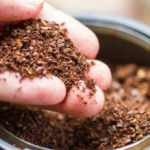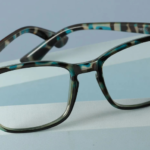In Dungeons & Dragons 5th Edition (D&D 5e), Sacred-Flame is a cantrip commonly used by clerics. This radiant spell embodies divine power, allowing the caster to unleash a burst of holy fire upon their enemies. Unlike traditional fire-based spells, Sacred Flame deals radiant damage, making it effective against creatures vulnerable to divine energy, such as undead.
If you’re looking for a reliable, damage-dealing spell that bypasses cover, Sacred-Flame is a solid choice. This guide will break down everything you need to know about Sacred-Flame 5e, including its mechanics, advantages, drawbacks, and how it compares to other cantrips.
Sacred Flame 5e Spell Mechanics

Before using Sacred-Flame in your game, it’s important to understand how the spell works. Here’s a breakdown of its official stats from the Player’s Handbook:
- Spell Level: Cantrip
- Casting Time: 1 action
- Range: 60 feet
- Components: V, S (Verbal, Somatic)
- Duration: Instantaneous
- Effect: A burst of radiant energy targets one enemy within range, forcing them to make a Dexterity saving throw. On a failed save, the target takes 1d8 radiant damage (increases at higher levels). The spell ignores cover.
Damage Scaling by Level
As a cantrip, Sacred-Flame’s damage increases as you gain levels:
- Level 1-4: 1d8 radiant damage
- Level 5-10: 2d8 radiant damage
- Level 11-16: 3d8 radiant damage
- Level 17+: 4d8 radiant damage
Unlike many attack-based spells, Sacred-Flame does not require an attack roll. Instead, it forces the enemy to roll a Dexterity saving throw to avoid damage. If they succeed, they take no damage.
Why Choose Sacred Flame?
Sacred-Flame offers several advantages that make it a valuable tool for any cleric:
✅ Bypasses Cover
One of the biggest perks of Sacred Flame is that it ignores cover. This means enemies hiding behind obstacles, like walls or barricades, do not gain an advantage against the spell.
✅ Radiant Damage
Many enemies in D&D 5e, especially undead and fiends, are resistant to normal damage but vulnerable to radiant damage. This makes Sacred-Flame more effective than fire or force-based spells against these foes.
✅ No Material Components
Unlike some cantrips that require material components, Sacred-Flame only requires verbal and somatic components (a spoken word and a hand gesture). This makes it easy to cast even in restrictive environments.
✅ Scales with Character Level
As your character levels up, the spell’s damage increases automatically, ensuring it remains a viable combat option.
Drawbacks of Sacred Flame
While Sacred- Flame is a powerful cantrip, it does have some limitations:
❌ Relies on a Dexterity Saving Throw
Because Sacred-Flame requires the enemy to fail a Dexterity saving throw, it can be ineffective against high-dexterity creatures such as rogues, monks, or certain beasts.
❌ No Additional Effects
Some cantrips, like Fire Bolt (which can ignite objects) or Toll the Dead (which deals extra damage to injured targets), offer additional benefits. Sacred-Flame only deals damage without any extra effects.
❌ Single Target Only
Sacred-Flame can only target one creature per casting, unlike cantrips like Thunderclap, which affects multiple enemies.
Sacred Flame vs. Other Cantrips

How does Sacred-Flame compare to other cleric and wizard cantrips? Let’s take a look at some common options.
Sacred Flame vs. Fire Bolt
| Feature | Sacred- Flame | Fire Bolt |
|---|---|---|
| Damage Type | Radiant | Fire |
| Attack Type | Dex Save | Ranged Attack |
| Damage Dice | 1d8-4d8 | 1d10-4d10 |
| Ignites Objects? | No | Yes |
| Bypasses Cover? | Yes | No |
| Targets? | One | One |
- Fire Bolt deals more damage (1d10 instead of 1d8) but is less effective against undead and fiends.
- Sacred-Flame bypasses cover and deals radiant damage, which is stronger against certain enemy types.
Sacred-Flame vs. Toll the Dead
| Feature | Sacred-Flame | Toll the Dead |
| Damage Type | Radiant | Necrotic |
| Attack Type | Dex Save | Wis Save |
| Damage Dice | 1d8-4d8 | 1d8 or 1d12 |
| Special Effect? | None | Extra damage if target is injured |
- Toll the Dead deals 1d12 damage instead of 1d8 if the target is missing HP.
- Sacred-Flame is better against creatures resistant or immune to necrotic damage.
- Dexterity saves tend to be more common than Wisdom saves, meaning Sacred-Flame might be harder to land.
Conclusion:
For clerics looking for a reliable ranged damage spell, Sacred-Flame is an excellent choice. Its ability to bypass cover, deal radiant damage, and scale with level makes it useful throughout a campaign. While it has limitations—such as relying on a Dexterity saving throw—it remains one of the most versatile and thematic cantrips available in Dungeons & Dragons 5e.
So, if you’re playing a cleric or a divine spellcaster, Sacred-Flame is a solid cantrip to keep in your arsenal. Ready to smite your enemies with divine fire? 🔥✨
FAQs
Here are some of the most frequently asked questions about Sacred-Flame 5e:
1. Can Sacred-Flame hit an enemy behind cover?
Yes! Sacred-Flame ignores cover, meaning enemies cannot use obstacles to gain protection against it.
2. Does Sacred-Flame require an attack roll?
No. The target must make a Dexterity saving throw instead.
3. Can Sacred-Flame be used multiple times in a turn?
No. Since it is a cantrip with a casting time of 1 action, it can only be used once per turn unless you have a feature like Twinned Spell (Sorcerer Metamagic).
4. Does Sacred-Flame work underwater?
Yes! Since Sacred-Flame deals radiant damage, it is not affected by water, unlike fire-based spells.
5. Can Sacred-Flame be countered?
A creature with the Counterspell ability could interrupt the casting, but since it’s a cantrip, this is highly unlikely.






